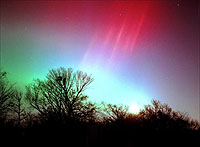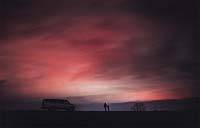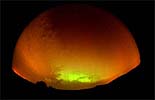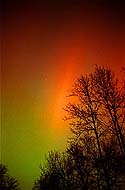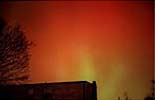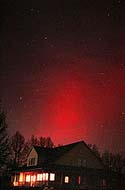
|
NEW! All-Sky Cam installed At ICSTARS Ranch. See the sky right now! |
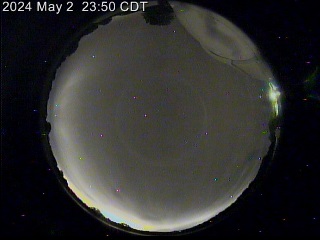 |

Aurora borealis
It's scientific Greek name means Dawn of the North.
For thousands of years the northern lights have been observed and pondered by many different civilizations. This phenomenon marks the threshold between the visible and invisible universe. Who could imagine that billions of miniscule particles streaming out from the sun, crashing into invisible magnetic fields circling the Earth and charging up electrons too small to see or feel was powering these wonderful lights. Unfortunately, where aurora is common, humans tend to be scarce. The auroral ovals circle both the north and south poles and from time to time expand towards the equator. If you happen to live near the pole, auroras are commonplace on clear nights. The chances decrease as you travel away from the polar regions. Someone in Moscow may have a one night in 35 chance of seeing the lights. The chances in Munich are only one in 100. In Rome the chances fall to one in 1,000 and in Tokyo it's a staggering one in 10,000· or about once every 30 years!
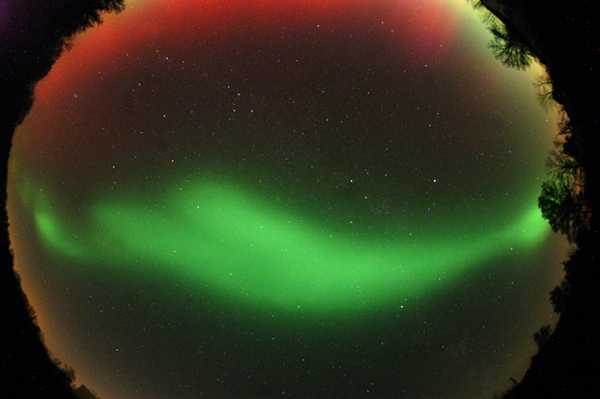
Beautiful Aurora Display in the Midwest! November 7, 2004.
Other Area Aurora's of the Past
March 24/25 , 1991 - Scopeville Kansas Aurora.
November 8, 1991 - Powell Observatory Aurora.
Journey to other Aurora Pages.
Return to the ICSTARS Solar Section
